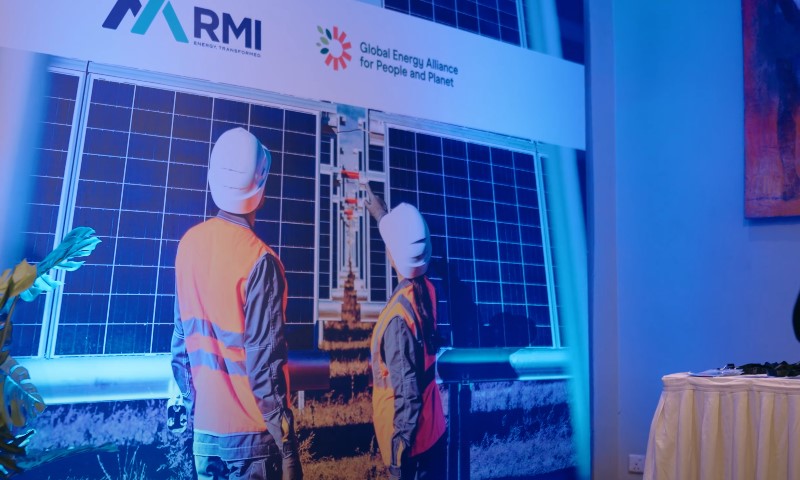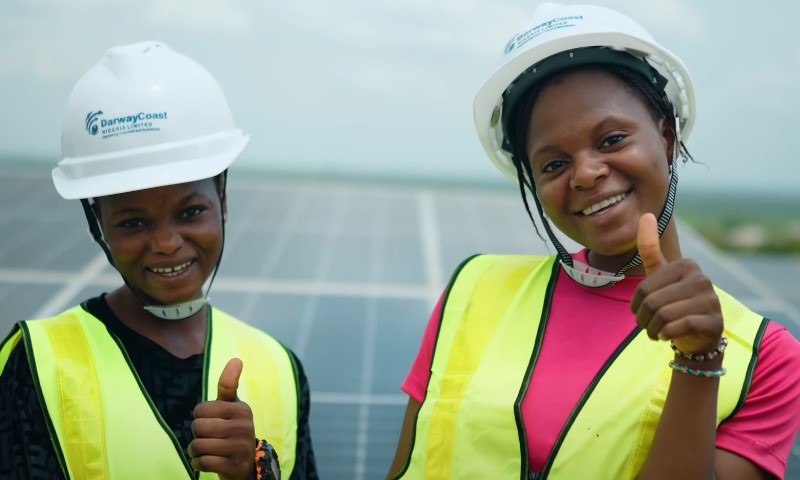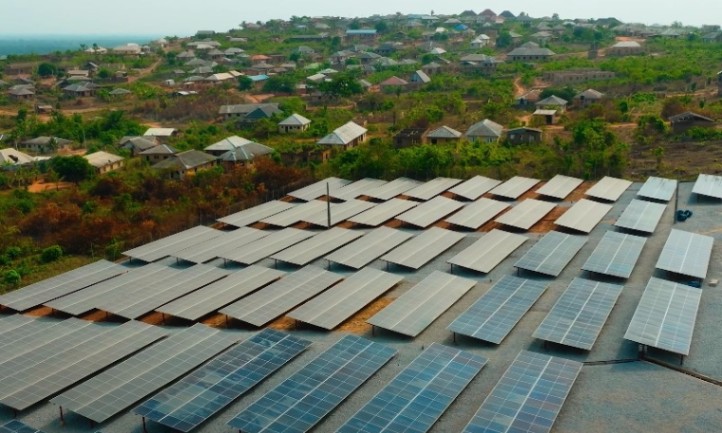
When Nigeria’s Federal Government announced in August 2025 that it was committing ₦100 billion to solarise public infrastructure, the move was not just about buying panels and batteries.
Table of Contents
ToggleIt was about finally addressing a long-standing weakness in Nigeria’s public services: unreliable, costly, and diesel-heavy power supply.
With the launch of the National Public Sector Solarisation Initiative (NPSSI) , the government is putting serious money on the table to cut inefficiencies, lower running costs, and keep hospitals, schools, security facilities, and offices running smoothly.
The scale of the programme, its structure, and the political timing all matter. Nigeria has battled chronic grid instability for decades, with annual economic losses from power shortages estimated by the World Bank at around 29 billion dollars.
Public institutions have survived by relying on diesel generators, a stopgap solution that has drained budgets and left a heavy carbon footprint. NPSSI is designed to shift that reality.
What Was Announced

Between August 8 and 13, 2025, Abuja became the stage for a high-profile unveiling. The Federal Government formally launched the NPSSI, committing ₦100 billion in Phase 0 funding.
Memorandums of Understanding (MoUs) were signed among the Rural Electrification Agency (REA), the Budget Office of the Federation, Infrastructure Corporation of Nigeria (InfraCorp), and the Ministry of Finance Incorporated (MOFI) to anchor governance.
The Key Highlights
- Phase 0 budget : Fully funded by government at ₦100 billion.
- Scope : Solar deployment across schools, teaching hospitals, security posts, and government offices.
- Objective : Cut diesel dependence, lower running costs, and improve reliability.
- Launch signal : Part of the fiscal agenda set earlier in 2025, where ₦100 billion was earmarked to begin solarisation.
It is the largest single public-sector solar commitment Nigeria has made to date, and it sets the stage for future blended-finance models.
Why the Move Matters Now
Nigeria’s grid system remains fragile. Transmission losses are high, outages are frequent, and vandalism continues to strain supply. Beyond household inconvenience, the weakness hits public institutions hard.
A hospital without stable power risks lives; a university without electricity stalls labs and ICT services; security posts left in the dark undermine public safety.
It’s comparable to how blocked gutters left unchecked can cripple a building until a Gutter Cleaning service steps in.
Meanwhile, the public sector has bled resources through diesel costs. Generators run daily across ministries, universities, and hospitals, with maintenance and fuel consuming chunks of limited budgets.
The timing also overlaps with broader reforms:
- According to Reuters , in August 2025, government approved a plan to refinance ₦4 trillion in electricity-sector debt , a major effort to stabilise the market.
- NPSSI acts as a complementary intervention , reducing diesel procurement in the public sector and cushioning essential services from wider grid instability.
What the ₦100 Billion Will Fund
Phase 0 is the seed stage. Authorities have signalled that detailed site lists will be rolled out in tranches, but target beneficiaries are clear.
Beneficiary Institutions
- Teaching hospitals and federal medical centres : Essential for 24/7 service reliability.
- Universities and schools : Stable power supports ICT, labs, and digital learning.
- Security facilities : Communications, lighting, and surveillance need dependable supply.
- Government offices : Administrative services demand continuous uptime.
Technologies and Measures
- Rooftop and ground-mounted solar PV tailored to each facility.
- Battery storage for evening hours and backup.
- Smart inverters and controls to manage load and efficiency.
- Hybrid strategies that minimise generator use without compromising reliability.
NPSSI Phase 0 at a Glance
| Item | Detail |
| Programme | National Public Sector Solarisation Initiative (NPSSI) |
| Initial funding | ₦100 billion (Phase 0) |
| Launch | August 2025 |
| Lead agency | Rural Electrification Agency (REA) |
| Institutional focus | Hospitals, schools, security posts, government offices |
| Financing model | Public funding first, blended finance later |
| Policy context | Energy Transition Plan 2060, debt refinance plan |
How Efficiency Gains Will Show
NPSSI’s benefits go beyond installing panels. The design is meant to lock in measurable efficiency.
- Lower costs : Diesel purchases fall, while generator maintenance cycles stretch.
- Reliability : Hospitals can keep theatres open, schools can run evening ICT labs, and security posts can maintain 24-hour operations.
- Efficiency : Smart controls match supply with demand, reducing waste.
- Environmental progress : Reduced emissions contribute to Nigeria’s net-zero 2060 pathway.
Practical Implementation Examples

The ₦100 billion plan only makes sense when you see how it plays out on the ground. Here are a few snapshots of what the rollout could look like in real facilities.
Teaching Hospital
- PV arrays across operating theatres and diagnostic wings.
- Batteries providing 2–3 hours of evening peak power.
- Generators cut to tertiary backup.
Outcome : Surgeries and intensive care less vulnerable to grid collapses.
Federal University
- Lecture halls and labs equipped with PV and storage.
- ICT centres fitted with smart meters for tracking and efficiency.
- Evening classes continue uninterrupted.
Outcome : Better research continuity and fewer disruptions.
Security Facility
- Compact solar-battery systems for surveillance and comms.
- Hybrid controllers trigger generator only when required.
Outcome : Lower diesel dependency without compromising readiness.
Financing
@justicecrack FG Spends ₦200b Monthly On Electricity Subsidies, Says Presidential Aide LetMeExplain
Phase 0 is fully government-backed, but the ambition stretches further.
- Phase 0 : ₦100 billion public allocation.
- Future phases : Attract local and international investors through blended finance, avoiding sovereign guarantees.
Challenges to Watch
No large public initiative is risk-free. For NPSSI, the pressure points are clear:
1. Procurement and delivery
Scaling from dozens to hundreds of sites requires standardised processes and quality control.
2. Operations and maintenance
Solar systems demand steady upkeep. Without proper budgets and contracts, inverters and batteries degrade quickly.
3. Grid and diesel interplay
Facilities will continue using backup generators. Hybrid control systems must ensure smooth integration without energy waste.
4. Financing continuity
Private financiers will only commit if government institutions demonstrate reliable payment flows.
5. Sector reform risks
Electricity-sector debt remains a sensitive issue. Poorly executed reforms could undercut the programme’s momentum.
How NPSSI Fits Nigeria’s Energy Policy

The initiative aligns with several existing strategies:
- Energy Transition Plan (ETP) : A pathway to net-zero by 2060, where renewable deployment is central.
- Decentralised power reforms : New legal frameworks empower states to pursue their own energy solutions, creating space for cooperation with NPSSI.
- Past efficiency roadmaps : NPSSI builds on efficiency ambitions set under NREEP and SE4All, but applies them in a highly visible way.
State-Level and Market Impacts
NPSSI is not an isolated project. It reflects a growing recognition that Nigeria’s energy future will combine grid reform with decentralised solutions.
- State-level autonomy : Allows integration of public-sector solar with local distribution frameworks.
- Grid relief : Distributed systems reduce load on overstretched transmission lines.
- Private sector growth : Installation, manufacturing, and O&M ecosystems can expand around NPSSI contracts.
Roadmap & What to Expect Next
- Site selection : High-impact institutions, especially hospitals and schools, will be prioritised.
- Standard procurement : Framework contracts and design templates will ensure scale without compromising quality.
- Commissioning and monitoring : Phase 0 sites will be metered and tracked, building the data lenders need for future phases.
- Capital markets engagement : Expect REA to push for ₦500 billion raises by early 2026 if performance data holds.
- Policy alignment : Updates to building energy codes, metering, and state-federal coordination will continue.
FAQs
- Public-sector energy bills shrink as diesel demand falls.
- Hospitals, universities, and security posts experience fewer service disruptions.
- Data from smart meters and monitoring drives better efficiency.
- Cleaner electricity cuts emissions and improves air quality.
- Private investment is unlocked, fuelling job creation in solar and O&M sectors.
Bottom Line
Nigeria’s ₦100 billion commitment to solarising public infrastructure through NPSSI is a serious step toward energy efficiency and service reliability. It is about reducing diesel dependence, stabilising essential services, and creating a pathway for private investment to follow.
The initiative is aligned with Nigeria’s broader energy reforms and its net-zero 2060 ambitions. The next challenge lies in execution: delivering high-quality projects quickly, keeping them well-maintained, and building the transparent data record that financiers require. If Phase 0 succeeds, NPSSI could mark a turning point in how Nigeria powers its public services.
Related Posts:
- Considering Working in Nigeria? Here's What You Need to Know
- Top 9 Digital Platforms That Influence Youth Culture…
- Nigeria National Football Team: Key Achievements and Records
- Complete Wildlife Travel Guide to Yankari National…
- 7 Most Watched Cartoon and Animation Series for Kids…
- Top 9 Career Opportunities for Professionals in Nigeria














